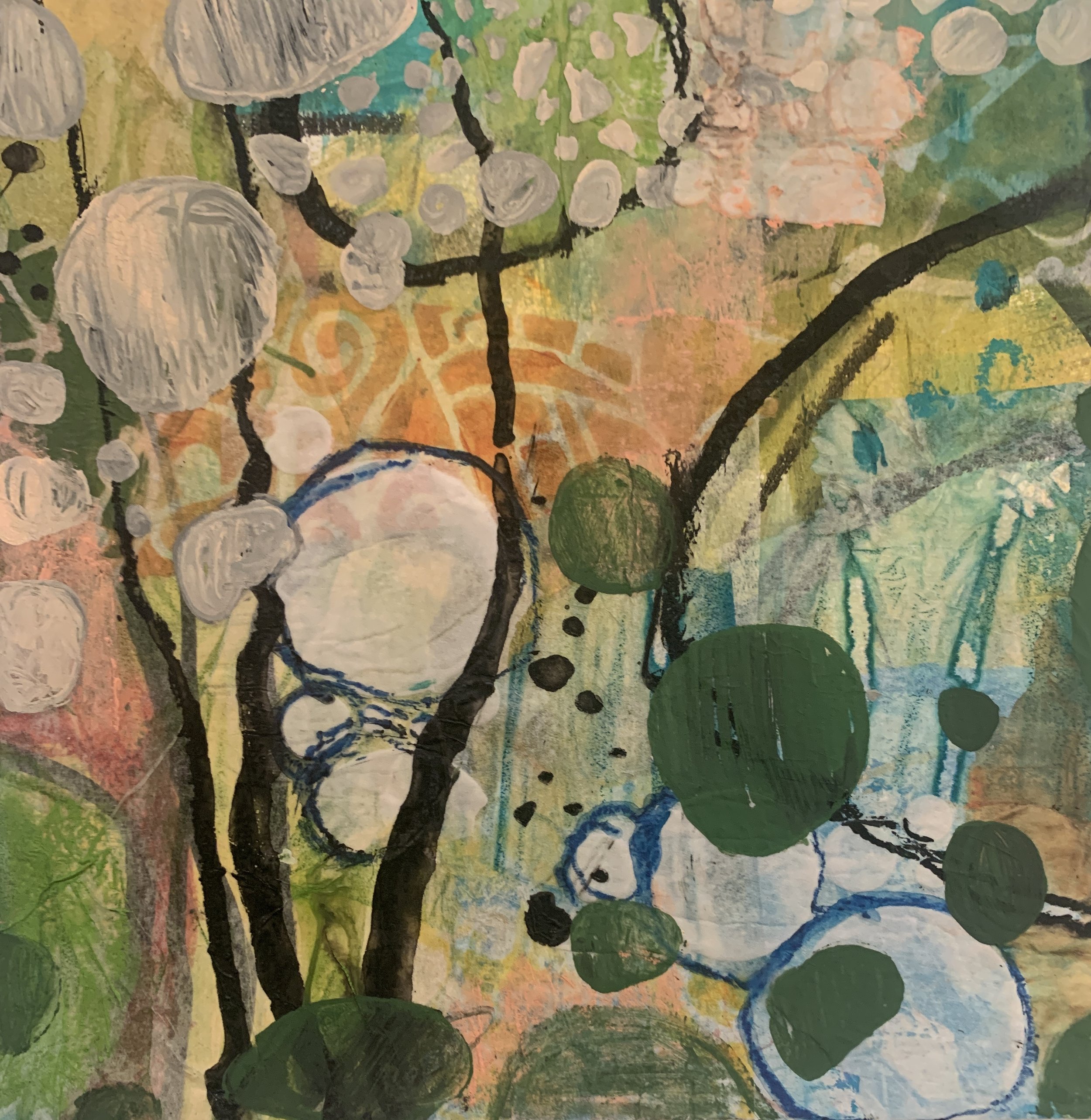10 Tips to Rejuvenate your Art Practice or a Stagnant Art Work
Rejuvenation or Stagnation
Revisiting an artwork that has been abandoned can be a daunting task. Here are a few ideas to help you rejuvenate an old artwork. When you have become stagnant in your art practice, these are also a few ways to get you flowing again.
Rejuvenate: give new life to, or to restore to a healthy condition, restore interest in something
Stagnate: to be, or become, inactive or unchanging, lack of progress or development, to cease to flow or move
Take a step back and assess the current state of your artwork and practice with fresh eyes. You may not have seen this work in a while. Identify areas that are working. It may be just a small section, but don’t diminish what you have done well.
Try cropping it down to just the very best parts and then build on it from there. You can even chop up the work and reassemble the pieces to create something completely unexpected. If you don’t love the work, you have nothing to lose.
Now you can see what needs improvement or aspects that you would like to change. Consider what you want to achieve with the reworking process. Consider a shift in your usual practice. If you always follow the same process, it may become stale. You could just be suffering from fatigue in your usual way of creating and need a new spark.
Sometimes you just need to adjust the composition and cropping can be a really powerful tool. It could be as simple as changing the format. Maybe the work would be better long, either vertically, or horizontally. Try a square format or even a circle.
Try changing the color scheme. Often,if you have too many colors, the artwork will not feel unified.. Try limiting the color palette and mix a little of each color into all of the colors you make. An example would be to mix a drop of yellow into every color you mix. This becomes the mother color.
Refine your details by making sure that you have enough differences. Check to see if you have enough large medium and small details to keep the viewers interested. The same goes for differences in value (dark, medium, and light), line (delicate, medium, and thick), shape (rounded, angular, disappearing) and texture (smooth, implied, thick impasto)
Experimenting with new techniques can be exciting and fun. Collage is a quick way to cover the problem areas in an art work and can immediately change the color, value, and shape. Collage can be opaque or a combination of opaque and transparent. Transparent areas can allow some of the old work shows through and add great interest through layering. Working in layers allows you to preserve the original elements while adding new elements or making adjustments. Working in layers gives you the flexibility to easily modify or revert changes if needed.
Mixing media is also a great way to experiment with materials. I love to draw on top of my painting with chalk, pencil, oil pastels, or charcoal. You just need to seal these materials in with a fixative spray before adding additional materials.
Consider unusual tools. If you always paint with a brush, find a stick, or a kitchen utensil that will make interesting marks. Print line shapes and textures by dipping cardboard into the paint. Bubblewrap, saran wrap, and cloth can add or lift paint off of the surface. Just have fun.
Start with small adjustments: Begin by making small, incremental changes to the artwork. This allows you to gauge the impact of each adjustment without making drastic alterations that you may regret later. Work slowly and build upon the changes as you progress.
Don't be afraid to experiment and explore different techniques or styles during the reworking process. This can lead to unexpected and exciting results. Take risks and be open to trying new approaches that can enhance the overall quality of your artwork.
Take breaks and step away from the artwork periodically. This allows you to gain a fresh perspective when you return to it. Reassess your changes in the context of the overall composition and make adjustments as necessary.
When you are revisiting an old work of art, you have absolutely nothing to lose. Dive in and treat it like a game. You may have an unexpected breakthrough in your art and art practice. A great way to rejuvenate stagnation is to just play.














